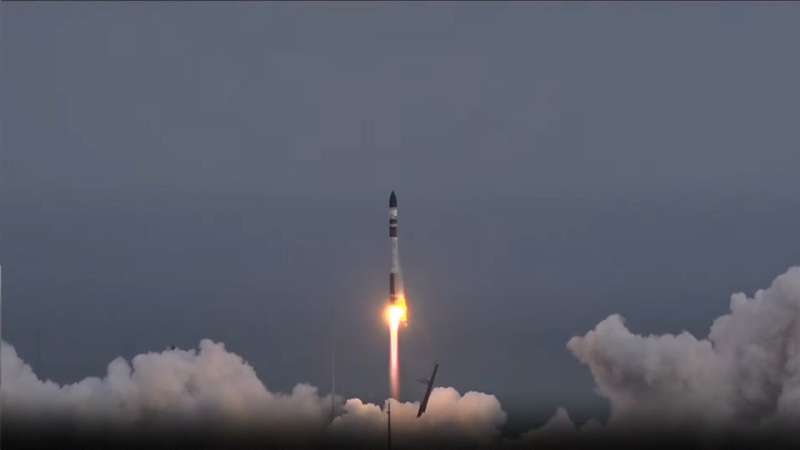This article has been reviewed according to Science X's editorial process and policies. Editors have highlighted the following attributes while ensuring the content's credibility:
fact-checked
trusted source
proofread
NASA launches second small climate satellite to study Earth's poles

Data from the pair of CubeSats will offer new insights into how much heat the Arctic and Antarctica radiate into space and how this influences global climate.
The second of NASA's PREFIRE (Polar Radiant Energy in the Far-InfraRed Experiment) two satellites is communicating with ground controllers after launching at 3:15 p.m. NZST, Wednesday (11:15 p.m. EDT, June 4). Data from these two shoebox-size cube satellites, or CubeSats, will better predict how Earth's ice, seas, and weather will change in a warming world—providing information to help humanity thrive on our changing planet.
The CubeSat launched on top Rocket Lab's Electron rocket from the company's Launch Complex 1 in Māhia, New Zealand, and follows the May 25 launch of the first PREFIRE CubeSat. After a 30-day checkout period, when engineers and scientists confirm both CubeSats are operating normally, the mission is expected to operate for 10 months.
"By helping to clarify the role that Earth's polar regions play in regulating our planet's energy budget, the PREFIRE mission will ultimately help improve climate and ice models," said Amanda Whitehurst, PREFIRE program executive, at NASA Headquarters in Washington. "Improved models will benefit humanity by giving us a better idea of how our climate and weather patterns will change in the coming years."
Capitalizing on NASA's unique vantage point in space, PREFIRE will help understand the balance between incoming heat energy from the sun and the outgoing heat given off at Earth's poles. The Arctic and Antarctica act something like the radiator in a car's engine, shedding much of the heat initially absorbed at the tropics back into space.
The majority of that heat is emitted as far-infrared radiation. The water vapor content of the atmosphere, along with the presence, structure, and composition of clouds, influences the amount of radiation that escapes into space from the poles.
The PREFIRE mission will give researchers information on where and when far-infrared energy radiates from the Arctic and Antarctic environments into space. The mission also will use its two CubeSats in asynchronous, near-polar orbits to study how relatively short-lived phenomena like cloud formation, moisture changes, and ice sheet melt affect far-infrared emissions over time. The two satellites pass over the same part of Earth at different times of day, giving researchers information on changing conditions.
"Climate change is reshaping our environment and atmosphere in ways that we need to prepare for," said Brian Drouin, PREFIRE's deputy principal investigator at NASA's Jet Propulsion Laboratory in Southern California.
"This mission will give us new measurements of the far-infrared wavelengths being emitted from Earth's poles, which we can use to improve climate and weather models and help people around the world deal with the consequences of climate change."
Each CubeSat carries an instrument called a thermal infrared spectrometer, which uses specially shaped mirrors and sensors to measure infrared wavelengths. Miniaturizing the instruments to fit on CubeSats required downsizing some parts while scaling up other components.
"Equipped with advanced infrared sensors that are more sensitive than any similar instrument, the PREFIRE CubeSats will help us better understand Earth's polar regions and improve our climate models," said Laurie Leshin, director at NASA JPL. "Their observations will lead to more accurate predictions about sea level rise, weather patterns, and changes in snow and ice cover, which will help us navigate the challenges of a warming world."
More information: To learn more about PREFIRE, visit: science.nasa.gov/mission/prefire/
Provided by NASA




















